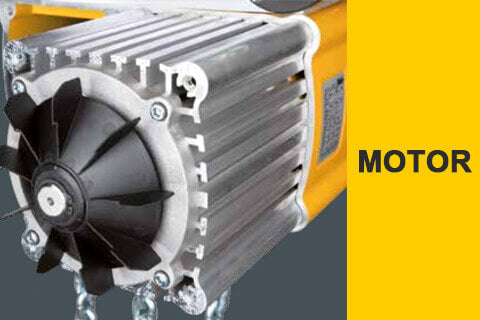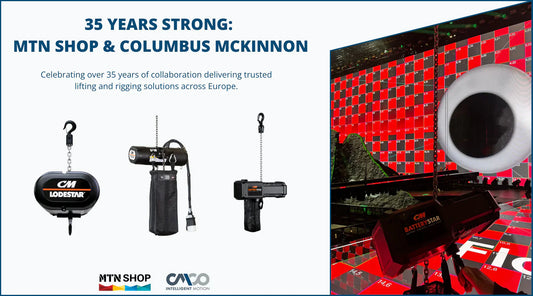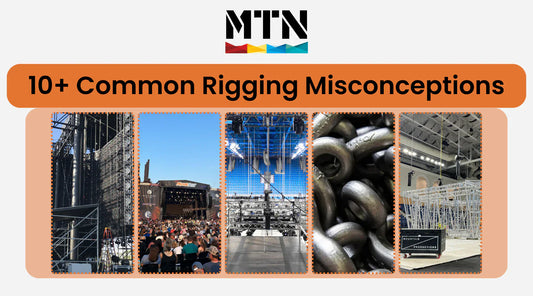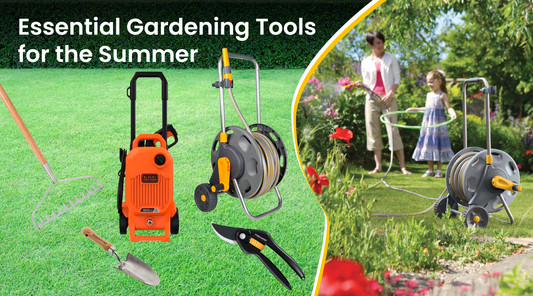Choosing an Electric Hoist
Article
The market is currently flooded with a large number of electric hoists. With all manufacturers claiming the top spot, it can become difficult to settle on the right one.
That’s why we’ve compiled this complete guide to choosing electric chain hoists to make sure that you understand which product you need and most importantly don’t make a mistake.
Let's start with the following simple, yet critical question.
Do you really need an electric hoist?
Our material handling team has received many electric hoist enquiries and have told how several customers ended up purchasing manual hoists after speaking with our staff. The main reasons for their purchasing of manual hoists were the loads to be handled were not heavy, the lifting height was short and speed was not a concern.
Therefore, we recommend asking yourself this question: Do your material handling projects fulfil one or more of the following situations?
- Speed is the criteria for your work and you need to keep things running highly efficiently.
- Loads to be lifted or lowered cannot enable you to physically stand close to the chain for operation.
- A high-level of precision is required when moving a load.
- A long lift, e.g. lifting a load over 18 meters, is required.
- A very heavy load is to be handled.
If yes, then an electric hoist is ideal for you.
Which electric chain hoist do you need?
With over 40 years of experience in the industry, we at MTN SHOP highly recommend our best-selling hoist that offers high-performance, is extremely durable, versatile and affordable, and is made to stand up against tough working environments.
The product is Yale CPV/CPVF Electric Chain Hoist.

Made in Germany, Yale puts the power of professional-grade performance in the hands of every user. The product boasts a ''Robust Construction'', making the hoist a tough tool for various professional applications, and offers the proven performance at much more compact dimensions.
Yale CPV/CPVF leads the industry with numerous practical features & benefits
- Single and dual speed hoisting available
- A wide range of capacities: 250 kg to 5000 kg
- Different suspension types available: Top hook, Suspension lug and integrated trolley
-
Increased operating safety:
- Through 42 V control voltage (low voltage control) and the main contactor
- Overload protection by means of a slip clutch
- Load to be safely held even in the event of power failure -
Smooth service & enhanced lifetime:
- Oil bath gearbox with helical gearing
- A smooth run of the chain ensured by the chain guide -
Easy maintenance & inspection:
- Maintenance-free brake
- Designed with a service-friendly modular structure with all critical parts easily accessible -
Extra options & features for special working conditions
e.g. stainless steel components, parts designed for holding stationary loads above persons, radio or cable controls, flexible chain containers, thermal sensors - 2 year warranty & a lifetime lubricated gearbox
- Yale Product Family - Britain’s No. 1 Name for Lifting!
It's what's on the inside that counts

• A ribbed aluminum motor housing in which the stator is pressed
• IP55 protected motor with a sufficiently high duty cycle
• Regular air movement offered by the fan

• Maintenance-free & features a pre-set gap
• Easily accessible to inspect the gap during periodic maintenance
• Holds a load safely even in the event of power failure

• Designed with a modular structure with all critical parts easily accessible
• Re-adjusting the slip clutch and inspecting the brake is time-saving
See it in Action
How to choose the right Yale CPV/CPVF hoist model for your work?
While there are over 30 variants in the CPV/CPVF range, we have identified 6 important items to factor into your decision-making process.
1. Capacity
This is the first and most important factor to consider when selecting a model. A piece of advice we usually give our customers is ''Do not overlook your future needs''.
For example, if your constant load is 500kg and you see yourself lifting heavier objects in the future, then it is better to go for a 1000kg chain hoist to ensure the safety of both your workers and your cargo. The capacity range of the CPV/CPV is quite broad, between 250kg and 5000kg, a range that can fulfil most of your lifting tasks.
It also wouldn’t be cost-effective to upgrade each time you need to lift something heavier.
2. Power Source (3-Phase 400V vs 1-Phase 230V)
For low duty cycle applications such as home workshops, garages, and some light manufacturing facilities, a 1-phase hoist is sufficient.
If, however, you are in need of extremely high duty cycles that are usually required in most industrial facilities, then a 3-phase hoist will be more suitable to ensure that you have enough power for operation.
3. Lifting Speed
If high production is your goal, then a faster lifting speed will be required to get the best possible return on investment on your chain hoist purchase.
If you are simply offloading delivered goods and shifting them sporadically then look at a more modest speed.
Generally speaking, faster lifting speeds are preferred for long lifts or for shorter lift applications in which a high number of lifting/lowering cycles must be completed in a relatively short period of time - - - Joe Runyon, Columbus Mckinnon
4. Single Speed vs Dual Speed
Single speed operation is most common and utilised under normal lifting and lowering applications such as the offloading of goods. Dual speed hoists are ideal when more precise movements are required.
Take the CPVF 10-8 model as an example, the main lifting speed is 8 m/min and its fine lifting speed is 2m/min which controls load movement very precisely.
5. Height of Lift
The height of lift is the distance the load/bottom hook can travel between its fully lowered and fully raised positions, i.e. the distance for your load to be lifted or lowered.
Before purchasing a hoist, we usually advise customers to consider the height of the facility that the hoist is going to be installed. If you need to maximise the height of lift, the suspension lug option with very low headroom is the best.
We supply the lift ranging from 3 metres to 18 metres (Additional lift available upon request).

6. Suspension Type
• Suspension Hook: Supplied as standard.
• Suspension Lug: With reduced headroom, this option is great to maximise the height of lift and ideal for low-ceiling buildings.
• Push, Geared / Electric Trolley: If a load has to be moved from one place to the other, a trolley will be the right suspension choice that can traverse the length of the beam flange it is attached to, carrying the load to the desired place with minimal effort.
Don't just buy an electric hoist, buy the one that's trusted by elite professionals in the industry. If you'd like more information, please head over to our electric hoist collection or get in touch with us.
RON ROSE
Ron Rose is an owner of MTN SHOP & Mountain Productions and serves as the Global Managing Director. As MD, he has helped thousands of businesses to get their job done safely and effectively by offering useful and practical onsite safety knowledge.



